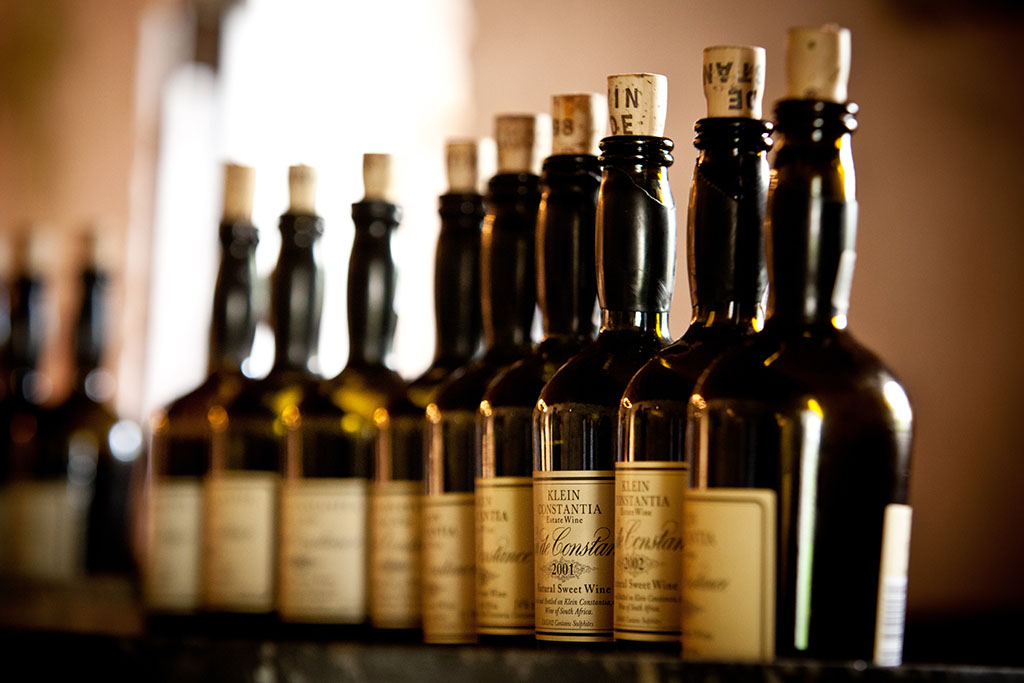June 7, 2024
Klein Constantia’s Vin de Constance: A Revival of a Legendary Sweet Wine

Klein Constantia’s Vin de Constance is one of the world’s most revered sweet wines, boasting a history that stretches back to the 18th century. This legendary wine has been praised by historical figures and featured in classic literature, cementing its status as a wine of distinction. In recent decades, the revival of Vin de Constance has captivated wine enthusiasts and critics alike, showcasing the exceptional quality and unique characteristics of this South African treasure.
Historical Significance and Revival
Originally crafted in the 18th and 19th centuries, Vin de Constance gained fame for its opulence and complexity. Favoured by figures like Napoleon Bonaparte and featured in the writings of Jane Austen and Charles Baudelaire, it was considered one of the most prestigious wines of its time. However, the outbreak of phylloxera in the late 19th century brought its production to a halt.
The revival of Vin de Constance began in the 1980s when Klein Constantia, under the ownership of the Jooste family, aimed to recreate this historic wine. The first modern vintage was produced in 1986, and since then, the wine has steadily regained its legendary status. The estate’s dedication to quality and tradition, combined with modern winemaking techniques, has ensured the consistency and excellence of Vin de Constance.

The Modern Era: Winemaking Excellence
Winemaker Matthew Day, who joined Klein Constantia in 2007, has played a pivotal role in refining and enhancing the production of Vin de Constance. Significant investments in the estate’s vineyards and winery have allowed for greater precision and control. According to Day, the focus has been on achieving balance and freshness, with the goal of producing a sweet wine that doesn’t taste sweet.
The production process for Vin de Constance involves meticulous vineyard management, with grapes harvested in multiple passes to ensure optimal ripeness. The Muscat de Frontignan grapes are then carefully fermented and aged to develop their complex flavours. Recent vintages have seen the introduction of new techniques, such as using foudres for ageing, which add depth and nuance to the wine.
Tasting Profiles and Critical Acclaim
Vin de Constance is celebrated for its vibrant and complex profile. The 2019 vintage, for example, received high praise from critics, including a 98-point rating from Decanter and 97 points from both Vinous and James Suckling. This vintage is noted for its butterscotch, lemon patisserie, and peach aromas, combined with a pristine texture and lively acidity. The palate offers layers of sweet citrus and stone fruit, balanced by energetic acidity and a touch of minerality, promising a long life ahead.
Comparing older and newer vintages highlights the evolution of Vin de Constance. The 2012 vintage, which marked the first under the new ownership of Charles Harman and Zdenek Bakala, is often cited as a turning point. This vintage showcased the enhanced precision and quality resulting from the estate’s investments in both the vineyard and winery.

Photo: the vineyards belong to Klein Constantia
Legacy and Future
The continuous improvement and dedication to quality have ensured that Vin de Constance remains a benchmark for sweet wines globally. The wine’s ability to balance sweetness with freshness and complexity has captivated a new generation of wine lovers while honouring its storied past. As Klein Constantia continues to innovate and refine its winemaking practices, Vin de Constance stands as a testament to the potential of South African wine on the world stage.
In conclusion, Klein Constantia’s Vin de Constance is not just a revival of a historic wine but a shining example of how tradition and modern winemaking can create something truly exceptional. Whether you are a seasoned collector or new to the world of fine wines, Vin de Constance offers a remarkable experience that reflects the rich heritage and innovative spirit of Klein Constantia.
